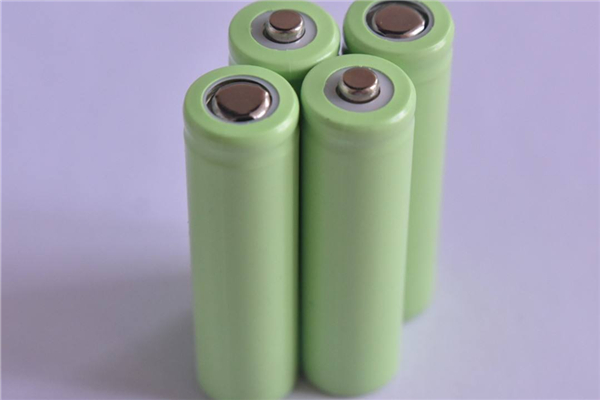Lithium Battery Thermal Runaway Temperature Causes and Control
Feb 18, 2020 Pageview:1483
What is a thermal runaway in lithium batteries?
Thermal runaway is a phenomenon that happens inside of a Lithium ion battery, it happens when a battery cell fails; the high heat of that failing cell propagates to the next cell, which in return causes the new cell to become thermally unstable. In some cases, the thermal runway happens in the form of a chain reaction where each cell disintegrates at its own timetable. The thermal runway can be a very rapid process, where a whole battery pack can be destroyed within just a few short seconds. In addition, it can be a slow process where a battery pack gets destroyed and consumed after several hours as each cell inside is consumed one by one.
What causes thermal runaway in lithium batteries?
Thermal runaway in Lithium ion batteries occurs when the heat that is generated internally during charging exceeds the battery's ability to transfer that excess heat to the outside of its structure. Thermal runaway occurs not only in Lithium ion batteries, but also in Valve-Regulated Lead-Acid (VRLA) batteries, Vented Lead-Acid (VLA) batteries, and Ni-Cad batteries.
The original thoughts on the matter were that thermal runaway happened without any warning or specific reason. That was an incorrect understanding of the matter. However, with modern technology, we now the causes, and even how to prevent or reverse it. If the user discovered that, a Lithium ion battery is in thermal runaway and the battery is not on fire yet. This battery can be salvaged and saved.
Early detection of the matter can be done by anyone. Anyone can feel a hot surface, right? You can sense that your battery is entering the thermal runaway phase by sensing your battery's temperature. Another thing you can do to detect this flaw is to measure and record what is called the normal overall string voltage (OAV). Every battery manufacturer lists their batteries' sweet spot where they want their cells to be charged in order to maximize the batteries' lives and performance.
It is recommended that you track these measurements using a spreadsheet at least twice a year. Pay close attention to any changes you see in the current flowing through the battery string, the temperature differential between each cell inside, and the normal ambient. There are some devices like a battery monitor that can be installed on the battery pack to help you with these measurements if you do not want to take them manually.
How do you control lithium battery thermal runaway temperature?
The first and most important thing to do to control lithium battery thermal runaway temperature is to care for the battery and perform maintenance periodically.
It is also worth noting that you should only use specified adapters to charge your batteries. Using an undesignated charger will not only harm your battery but can be very dangerous as you risk the hazard of fire.
Since Lithium ion batteries are delicate devices that require maintenance and careful handling, there are a few things you can do to care for your Li-ion battery and ensure that it has the longest life span possible:
When you buy a new Li-ion battery, observe and take note of the run time that it provides -fully charged- for powering your device.
Use the newly obtained information from the previous step as a baseline, and compare run times for this battery and older batteries.
Take note that the run time of your batteries depends on a number of factors including the type of device they are powering. It is important to take that factor into consideration when judging a Li-ion battery.
When your Li-ion battery approaches the end of its estimated life cycle, monitor the battery carefully for any swelling or any other faulty signs.
Consider replacing the battery with a new one if you note either of the following conditions: The battery run time drops below about 80% of the original run time.
Or if the battery charge time increases significantly.
When the Li-ion battery is stored for a long period of time unused, make sure to follow the storage instructions provided by the manufacturer of the battery.
When a lithium-ion battery is completely discharged, mean discharging below 2.5 volts per cell. There is a built-in safety circuit that will open and lock the battery. If you plugged your conventional charger the battery will appear dead to you. That is why if you ever encountered this condition go to a specialist to solve this problem. When the Li-ion reaches this state only battery analyzers having boost function will recharge the battery.
If the Li-ion battery was stored in the completely discharged condition, do not recharge them for safety reasons. Go to your local specialist instead.
There are two basic types of Lithium ion chemistries on the market. The Cobalt and the Manganese (spinal) chemistries. Since, manufacturers want to achieve maximum runtime for their devices like cell phones, digital cameras, and laptops. Cobalt-based Lithium ion batteries are used. However, in terms of thermal stability, it is not very good. Manganese based Lithium ion batteries are the newest edition to the market. It offers superior thermal stability as it can sustain temperatures up to 250 C (482 F) before it becomes unstable. Moreover, manganese has a very low internal resistance, which helps in delivering high current on demand. That is why manganese-based Lithium ion batteries are used mainly in power tools and medical devices. The next step for them will be hybrid and electric cars.
There is only one drawback for the manganese-based Lithium ion batteries is the lower energy density than those of the cobalt-based Lithium ion batteries. A battery cell made from manganese cathode typically provides only about half the capacity of cobalt. The best thing manufacturers can do to benefit from both worlds is to mix the metals inside of any given battery cell.
It is important to know that Lithium ion batteries are safe to use, and that heat-related issues and failures are very rare to happen. So, there is nothing to be concerned about when using Lithium ion batteries.
Leave Message
Hottest Categories
-
Hottest Industry News
-
Latest Industry News












